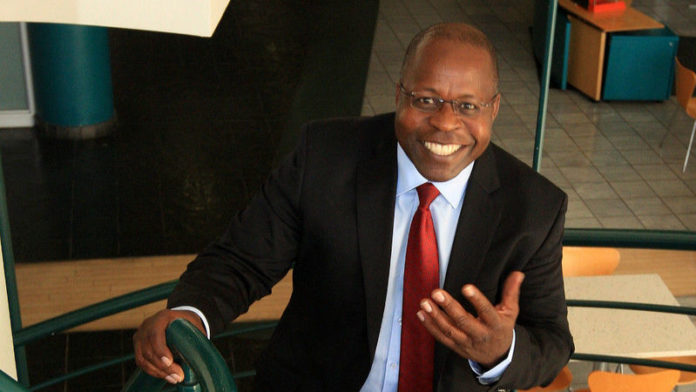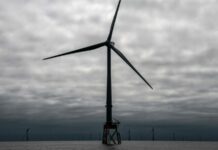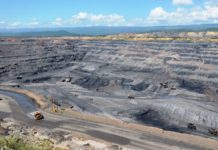
WHEN Ben Magara was officially named CEO of Exxaro Resources, people in the room applauded; some even cheered. “They always do that,” an analyst said when asked if the celebrations, taking place at the firm’s annual results announcement in March, were of a company emerging from trauma.
It’s been a harrowing time for the coal producer. A series of reports by Business Times last year detailed allegations of bullying by Exxaro’s then CEO, Nombasa Tsengwa. Up to nine executive and senior employees had left the company as a result, the newspaper said. After an investigation, the board suspended Tsengwa in December and she resigned in February, alleging bias against her.
Exxaro is still suffering the aftershocks of this tumult. For instance, Kgabi Masia — summarily dismissed as head of coal by Tsengwa — is the subject of a board-sanctioned investigation by law firm Bowmans.
Given these events, Exxaro is urgently in need of a reset. But is Magara the person to do that?
Previously head of engineering and capital projects for Anglo American Platinum, Magara was appointed Lonmin CEO in 2013, a year after the Marikana massacre. His tenure delivered mixed results. He managed negotiations with unions but failed to deliver Lonmin from its financial distress. As the company faced bankruptcy, Magara sold it to Sibanye-Stillwater.
With Magara’s appointment, Exxaro is sticking with its policy of hiring from within (he was a non-executive director and chair of its investment committee). But he won’t benefit from the customary 12-month handover of CEO duties Exxaro has given to its designates in the past.
Nonetheless, he must play a stabilising role as the board sets about reskilling the organisation. Exxaro has nine executive posts, of which five are held by people in acting roles. Critically, the company needs a full-time head of coal as well as what Exxaro terms a “chief strategic resilience and governance officer”. There are also three positions in the CEO’s office that require permanent appointments: investor relations, an internet audit head and a strategy officer.
Strategy is Magara’s second most important issue. The firm’s long-standing plan to diversify production by adding another mineral to its portfolio is progressing slowly. Exxaro has sought to branch out several times: into renewable power — with Cennergi, its most successful diversification — as well as aborted attempts at iron ore and natural resource management.
Samancor in Exxaro’s sights
Exxaro’s latest swing at diversification is in manganese. Head of new business Richard Lilleike hopes to conclude it this year. “It is a case of unlocking that first deal which we feel could be a catalyst to something bigger. But it is hard work,” he said, adding: “There are no active sales processes.”
The likelihood is Exxaro is trying to buy the Samancor joint venture (JV) consisting of South32 (60%) and Anglo American (40%); Anglo owns 74% of Hotazel Manganese Mines consortium. South32 and Anglo are likely willing sellers. Manganese ore, including Australian facilities, comprised only 5% of South32’s total sales in the six months ended December. As for Anglo, it has a new focus on copper and iron ore.
Yet they may be reluctant to act quickly, for economic reasons. Situated exclusively in the Northern Cape, there are nine operating producers of manganese competing for limited infrastructure. The need for consolidation is established, but the value of doing so is still latent.
“There is no need to do anything at this point,” Anglo CEO Duncan Wanblad said in an interview during February regarding his group’s Samancor JV shares. “It … provides a set of opportunities I’m not prepared to eliminate.”
Then there are the things Magara can do nothing about at Exxaro. One is its structure. As with African Rainbow Minerals, Exxaro has an influential shareholder with significant voting power. Eyesizwe RF, which this month agreed to extend its 30.81% stake in Exxaro until 2027, is an empowerment vehicle consisting of, among other entities, the Industrial Development Corp, an employee scheme and Exxaro itself. Importantly, Eyesizwe RF also consists of the economic interests of former Exxaro CEOs Sipho Nkosi and Mxolisi Mgojo.
The extent to which dominant structures of this type benefit minority shareholders is an open debate, especially when it comes to questions of corporate refresh, which is arguably required at Exxaro. Why, for instance, is its board so large? At 15 members, it has four more than Anglo, a company with a market value worth R600bn more. Three executives dispatched to the CEO’s office is also a curious way to structure an executive committee.
It also leads to other eccentricities.
Customarily, Exxaro’s former CEOs, charmingly referred to as ‘the pensioners’ club’, attend the group’s annual and interim results presentations. But in March, Mgojo — now president of Business Unity South Africa — posed questions about Exxaro management’s decision to route coal through Mozambique’s Maputo port instead of giving its backing to the Richards Bay corridor. He made a compelling point, but former CEOs publicly questioning the decisions of incumbents isn’t a good luck for a company in need of leadership. Ben beware.
A version of this article first appeared in the Financial Mail.











